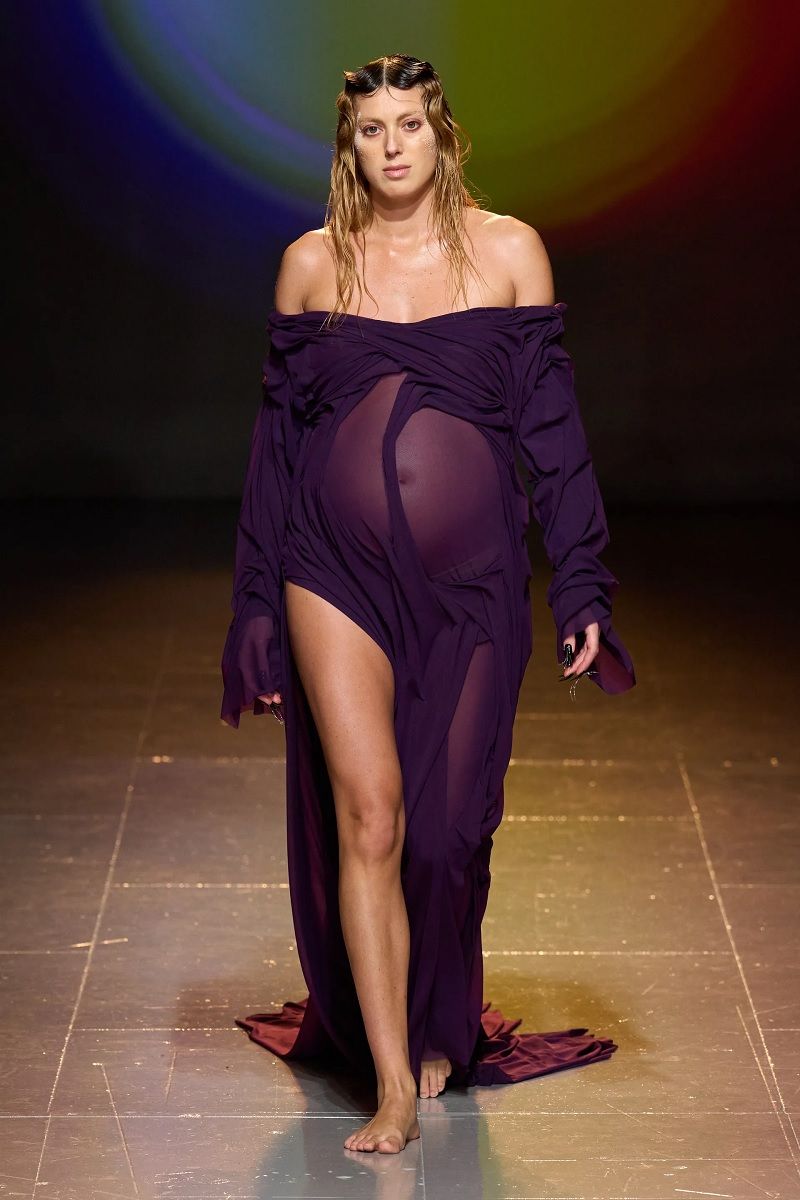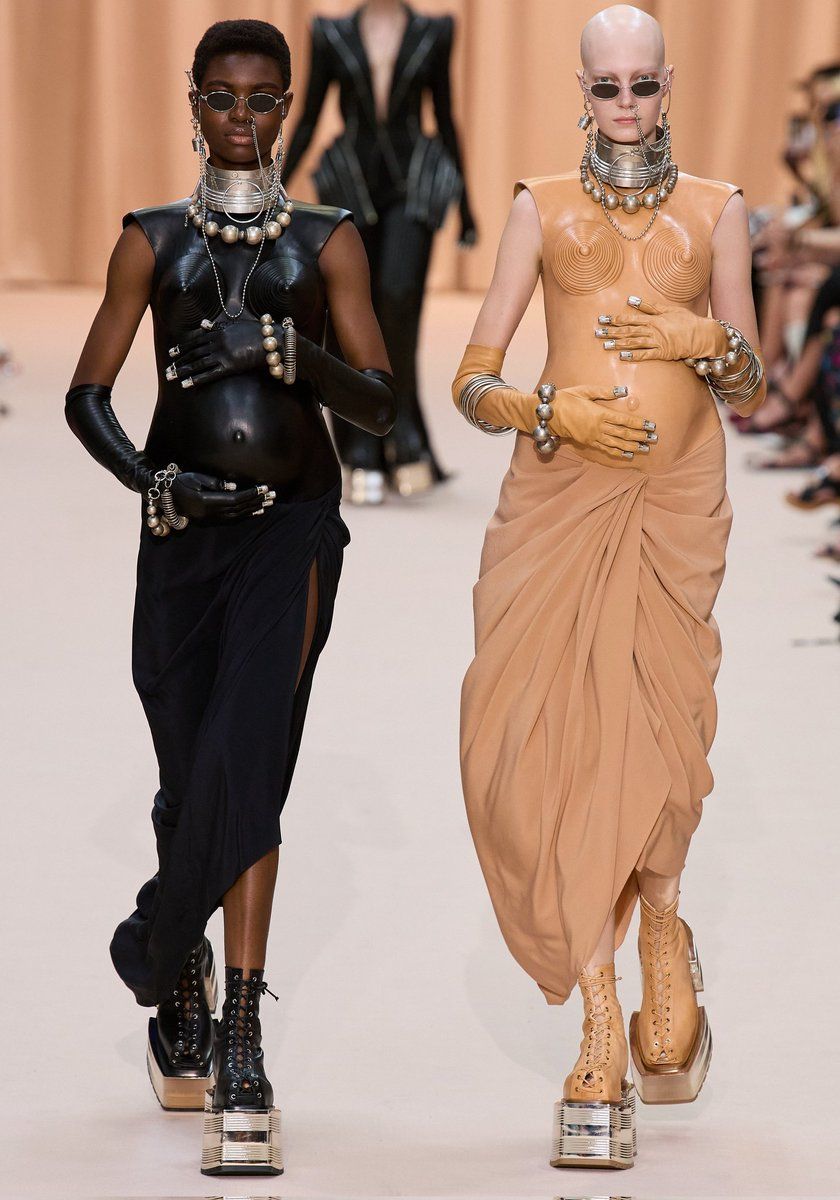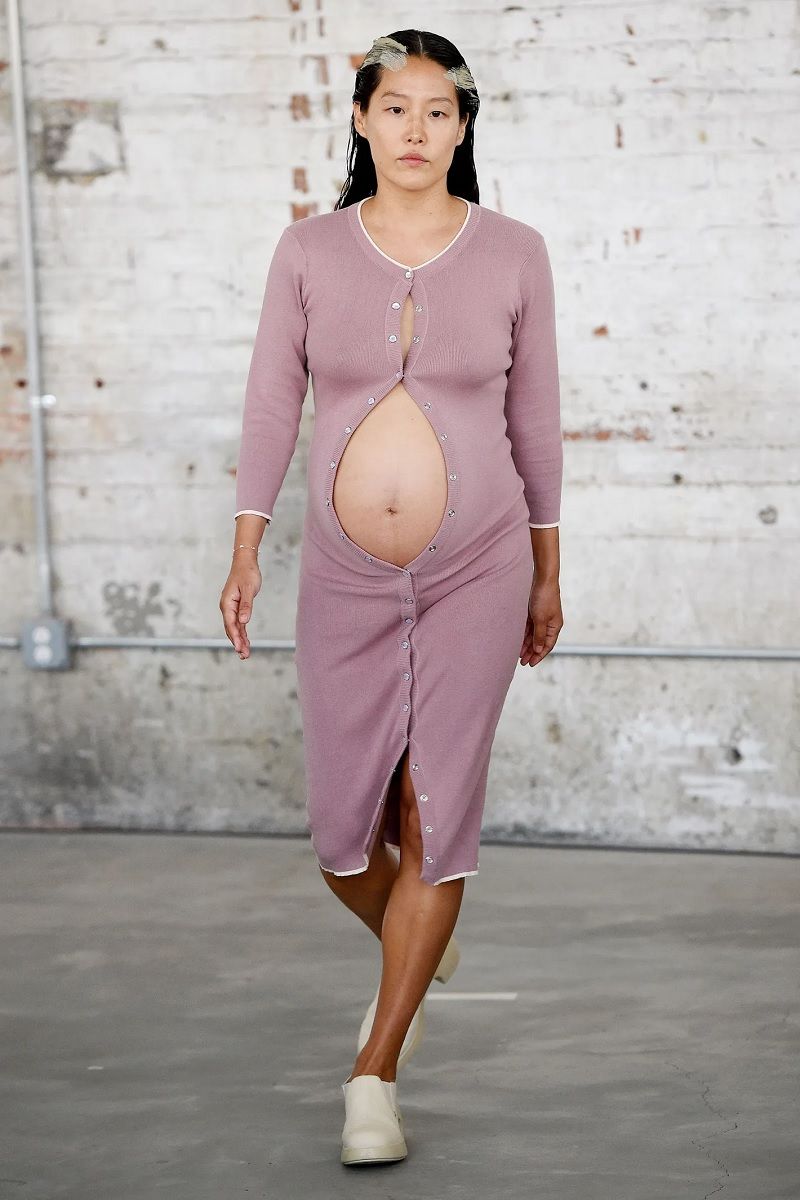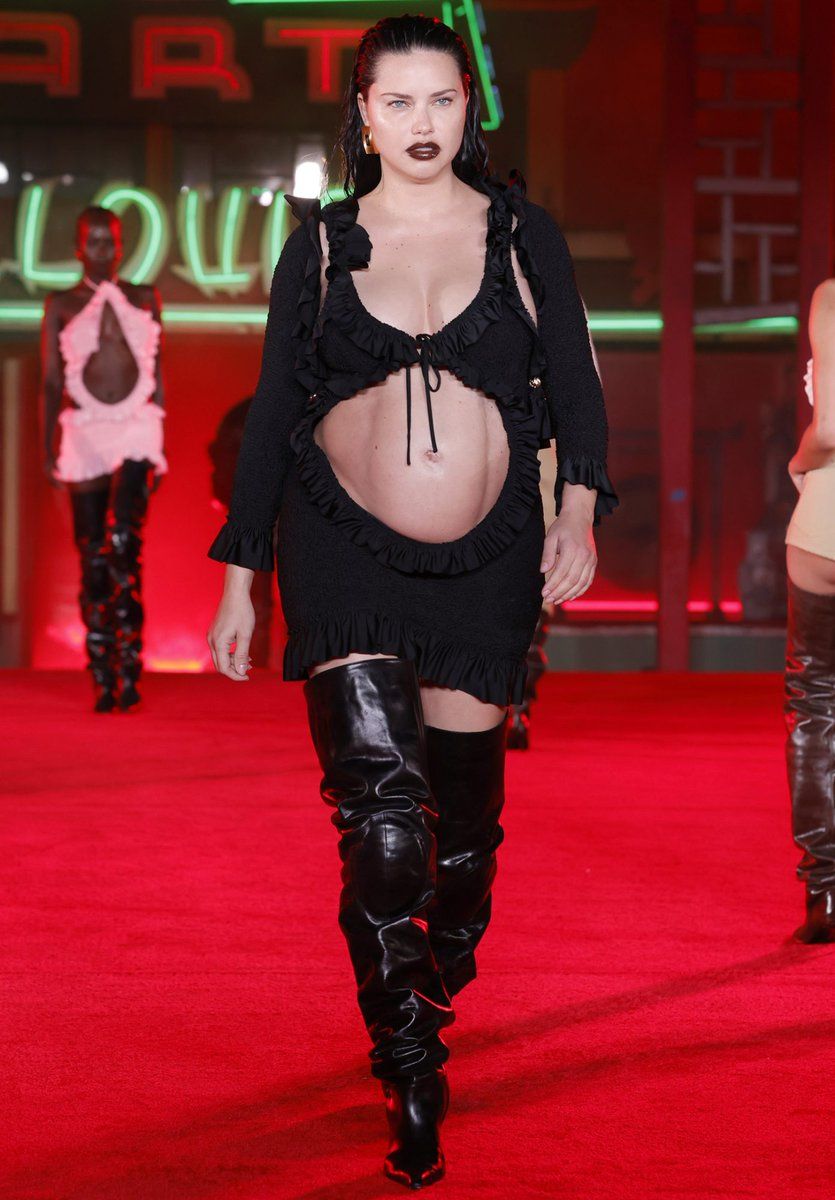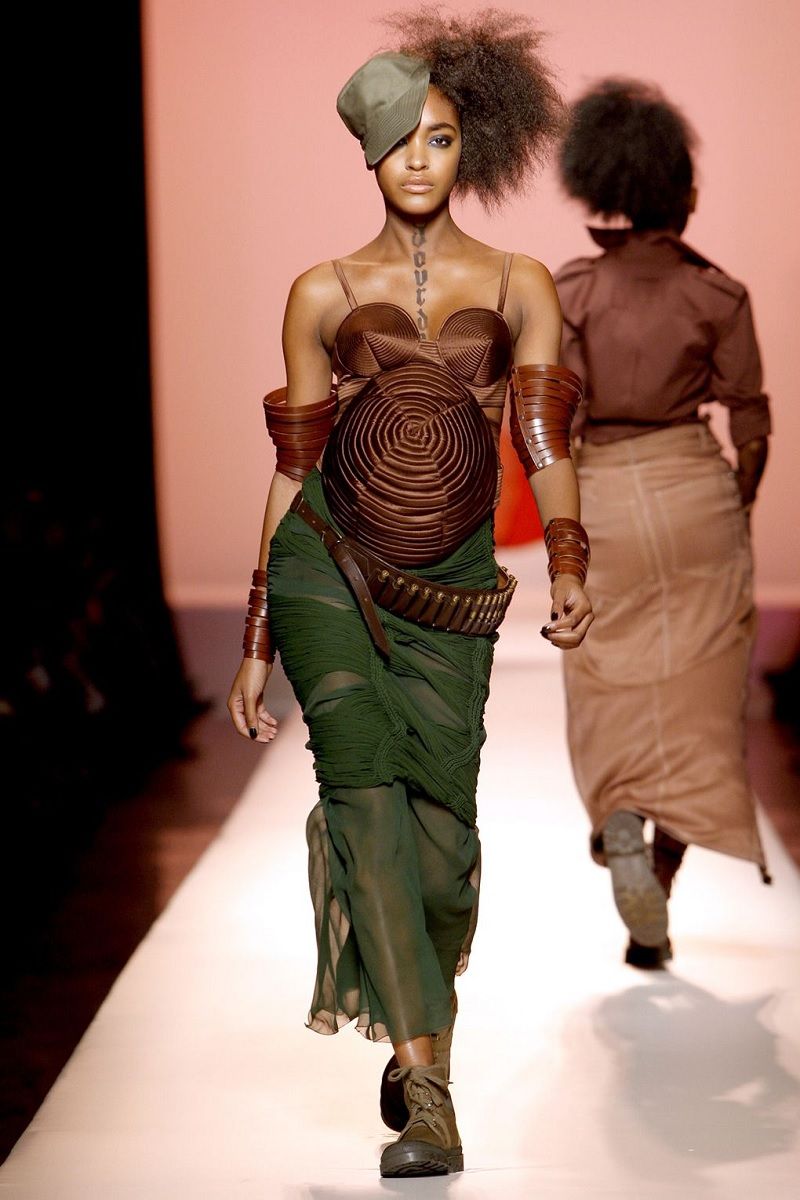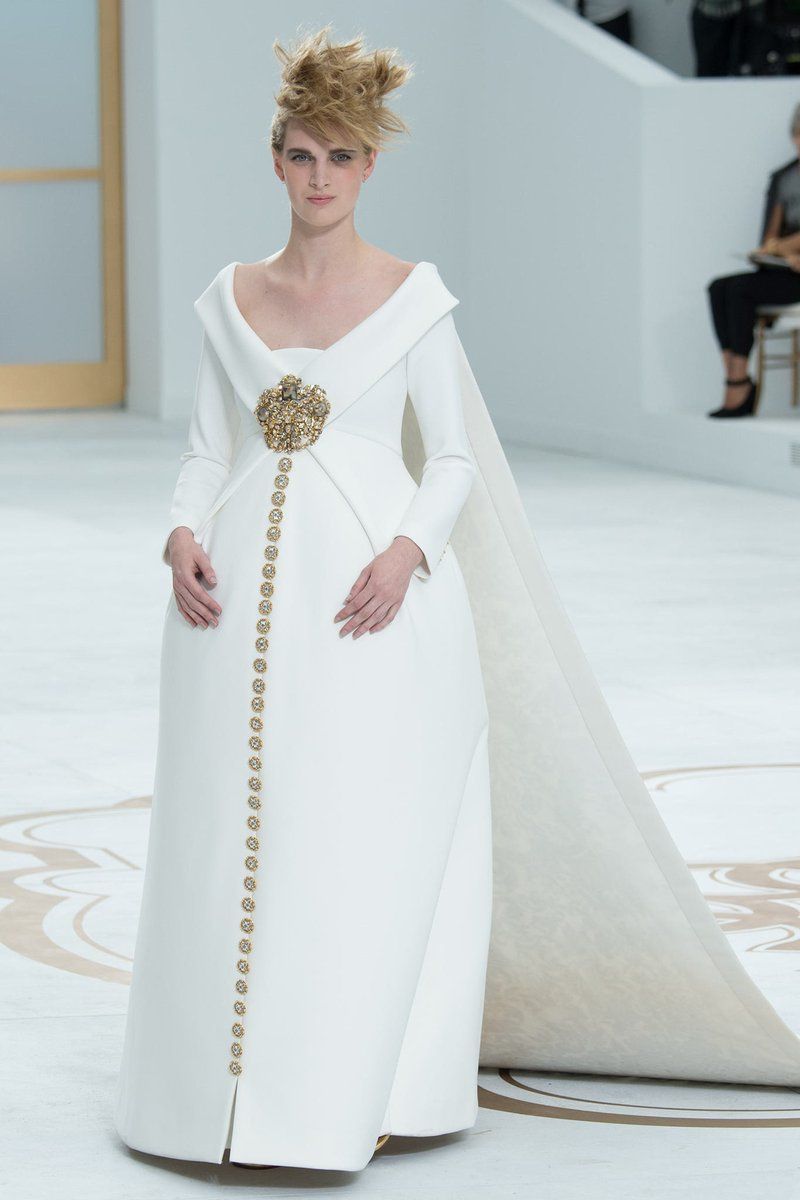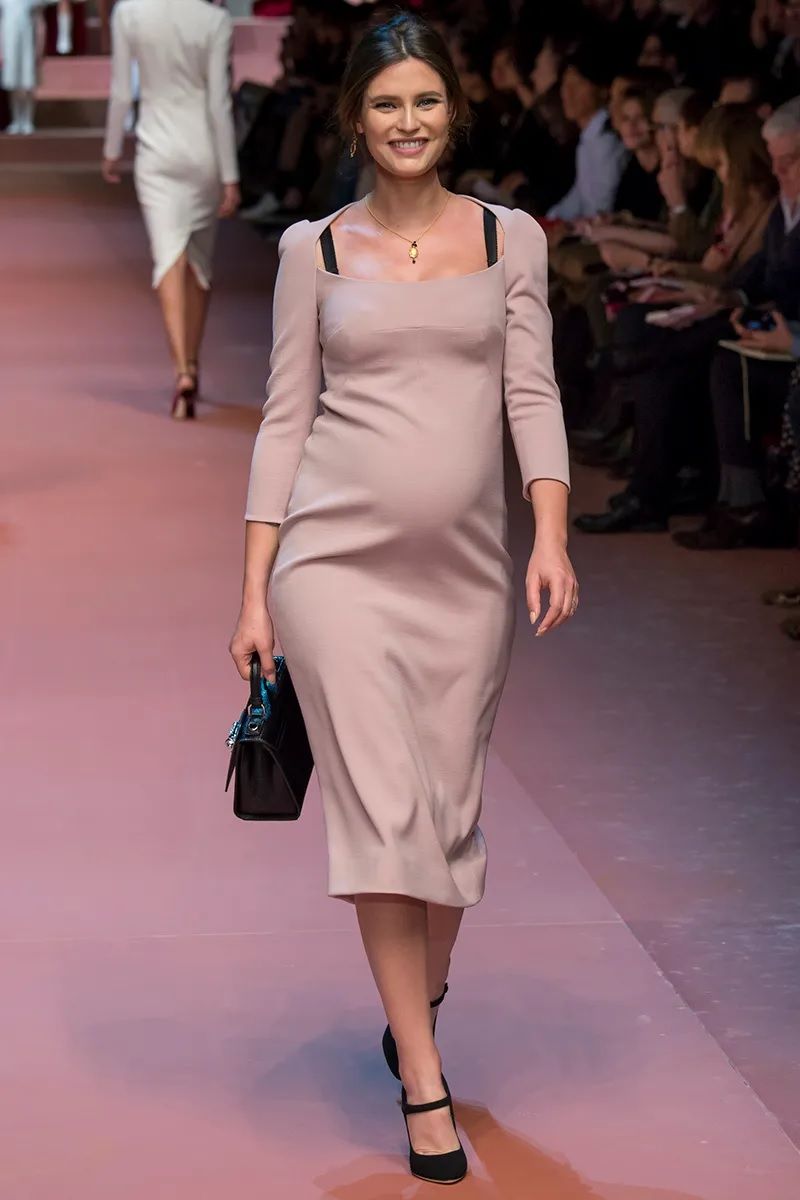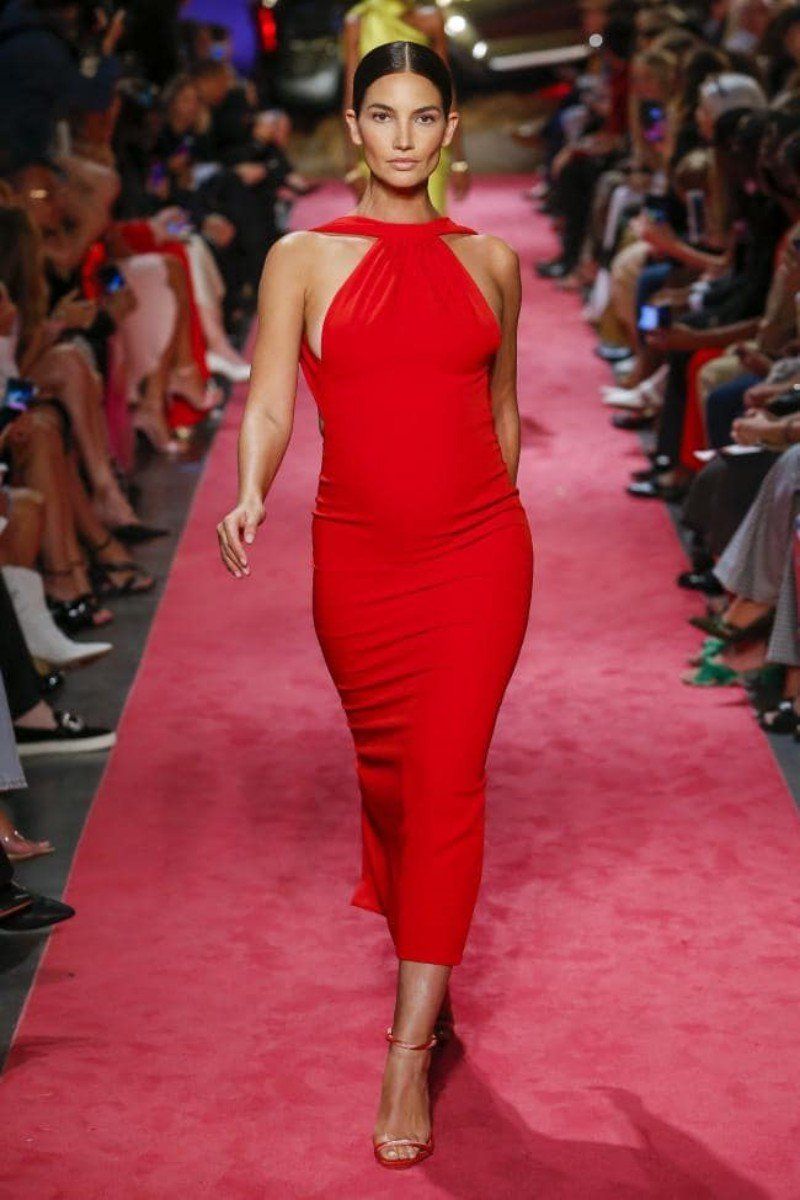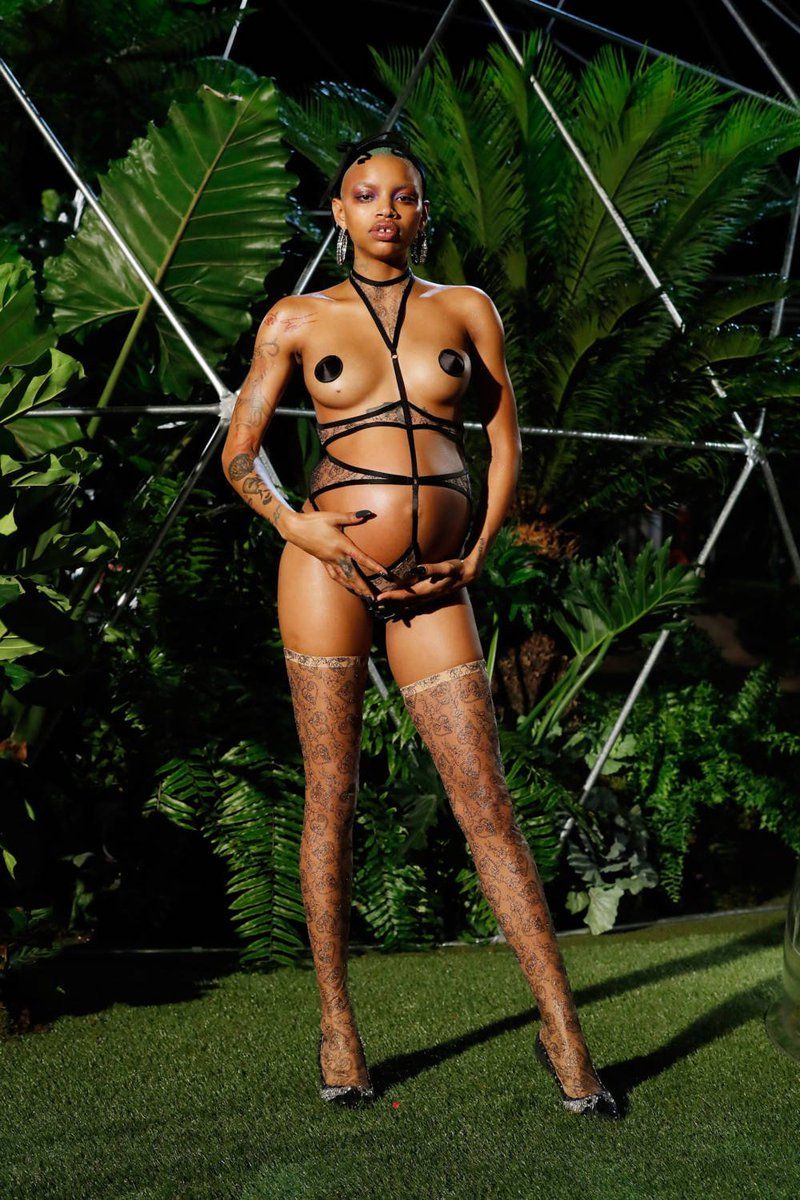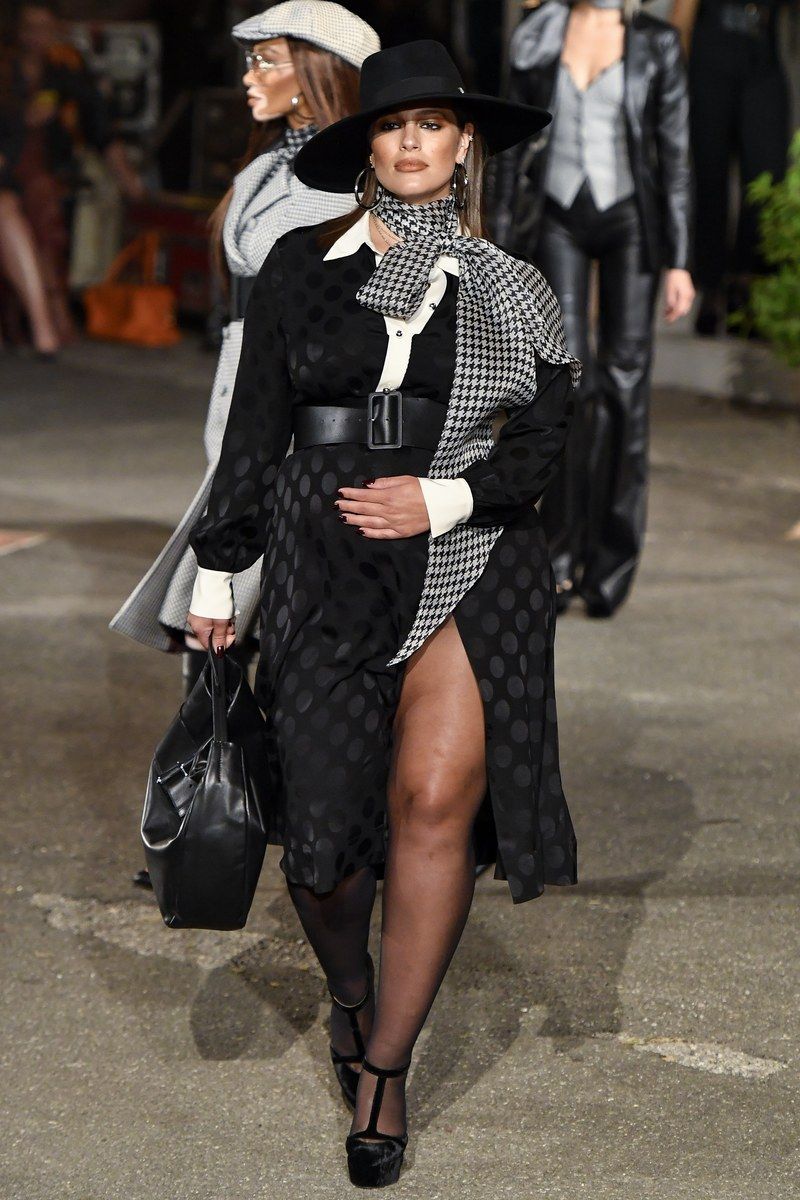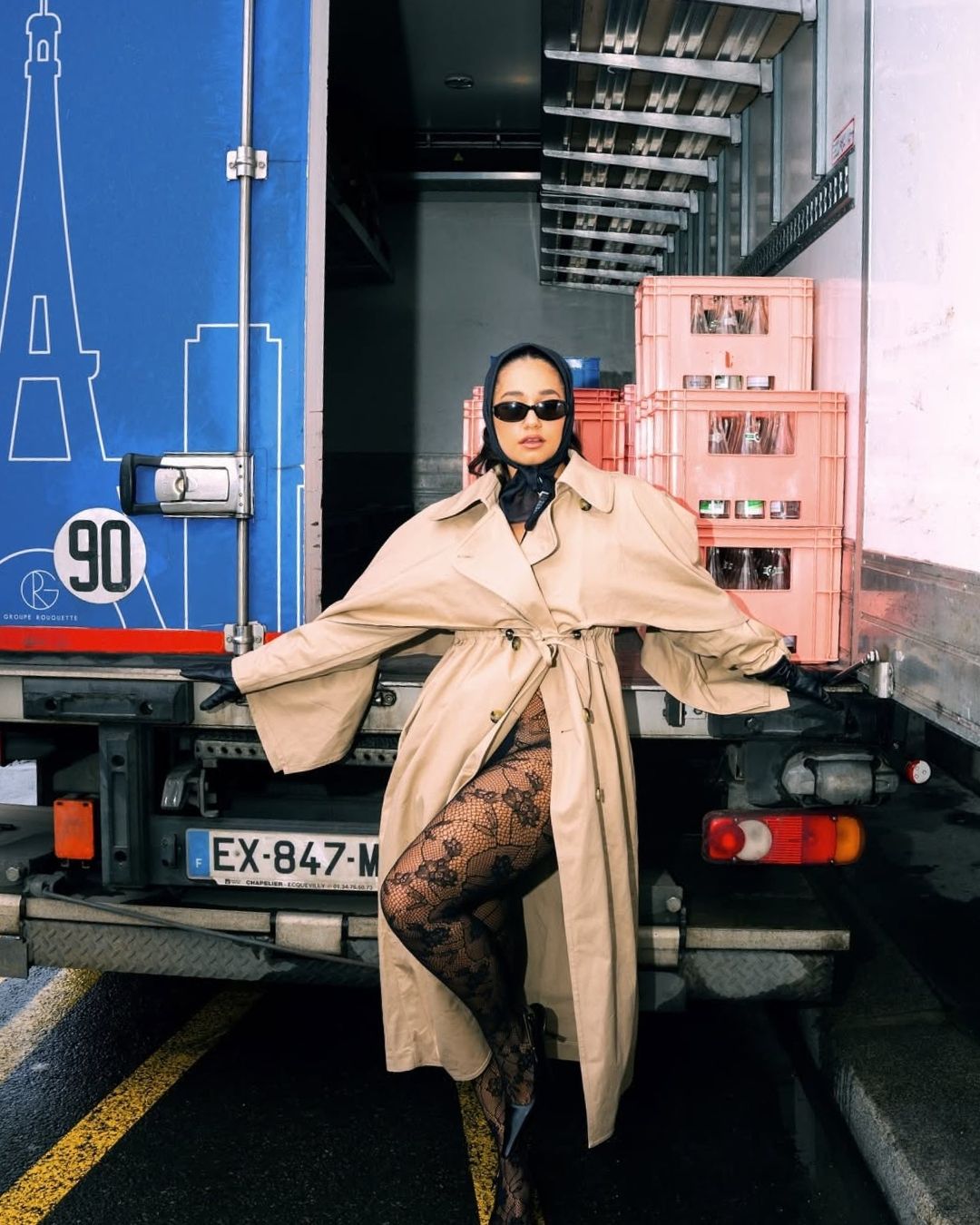
The relationship between fashion and pregnant women The word on the current fashion month between fashion shows, celebrities and the desire for empowerment
When Demi Moore landed on the cover of Vanity Fair in 1991, immortalised by Annie Leibovitz, naked and seven months pregnant, the world seemed to stand still. Suddenly, the pregnant body was no longer something to be hidden or a desexualised object bound by taboos and myths to social norms of what is or is not acceptable for expectant mothers. The effect of this image, so free and different, was so disturbing and divisive that many even called it pornographic. The actress's gesture left its mark by triggering a many-voiced dialogue, picked up by some celebrities (and ordinary people), about the possibility of experiencing pregnancy differently, which, like any other fact of life, can be approached in one's own way, even with a personal aesthetic. In short, it's okay to wear crop tops and shorts, just as it's okay to opt for sweatshirts and baggy trousers. Still, decades after the iconic Vanity Fair cover, there's a long way to go to make motherhood more inclusive, diverse and different depending on who's experiencing it. One only has to take a trip to Instagram and scroll through the avalanche of negative comments under Chiara Ferragni's posts in lingerie or with a more risqué outfit, for example, to understand that there are still people who judge and are scandalised when they see a naturally exposed baby bump, a breastfeeding woman or a mother joyfully living out her body and sexuality. The problem is that there are no absolute truths, no black and white, no right and wrong. Although it seems that everyone has the right answer in their pocket.
The fashion world is trying to normalise pregnant women by bringing them more and more onto the catwalk. On the first day of London Fashion Week, Sinéad O'Dwyer and Di Petsa presented models with baby bumps peeking out in shibari-inspired bodysuits or tunics that paid homage to the Greek myth of Persephone. Maggie Maurer, ethereal and pregnant, in a sequined, nude dress that revealed all her curves during Nensi Dojaka's fashion show, was the star of the FW22 fashion weeks, but many have preceded her. One of the first was seen at Alexander McQueen's 1994 Banshee collection presentation, others were Adriana Lima for Alexander Wang FW22; Slick Woods, nine months pregnant in lingerie and nipple sheaths for the 2018 Savage X Fenty show; Ashley Graham in 2019 for the Tommy Hilfiger x Zendaya show; Bianca Balti for Dolce&Gabbana FW15; Miranda Kerr for Balenciaga SS11; Jourdan Dunn in 2010 at eight months pregnant for Jean Paul Gaultier in a top that reprised the designer's famous cone bra especially for her. In recent seasons, however, fashion's interest in women with bellies and in motherhood, in general, has become more pressing, drawing a strange and dangerous parallel with the overturning of the 1973 Roe vs. Wade ruling that legalised the right to abortion at the federal level in the US and the fact that in many other countries the right to abortion is denied or, as in Italy, questioned. Some saw it as a kind of pro-life advertisement, others as a possible attempt to counteract declining birth rates, while a third group interpreted it as the desire of a new generation of designers to bring a contemporary idea of motherhood and family to the catwalk. More likely, much of this renewed attention is due to the Rihanna effect.
Last 12 February, Rihanna not only gave the Super Bowl audience a great performance, but used the half-time show to tell the world about her second pregnancy. The news came as a surprise, and the picture of the singer in Loewe's signature totally red look immediately went viral. The thoughts of fans and fashionistas thinking of the star's previous pregnancy immediately revolved around the outfits she will be wearing in the coming months.
"When I found out I was pregnant, I thought to myself, There’s no way I’m going to go shopping in no maternity aisle. I’m sorry, it’s too much fun to get dressed up. I’m not going to let that part disappear because my body is changing. I’m hoping that we were able to redefine what’s considered ‘decent’ for pregnant women. My body is doing incredible things right now, and I’m not going to be ashamed of that. This time should feel celebratory. Because why should you be hiding your pregnancy?"
Said Riri, and while expecting her first child by A$AP Rocky, she wore underwear and crystal mesh by Miu Miu, a fuchsia feather mini dress by Saint Laurent, a sheer lace dress by Dior, a full body set by The Attico, a purple eco fur and vinyl top by Gucci, baggy jeans with rhinestones by Martine Rose, ... Each look was a mix of boldness and playfulness, bringing back the image of a female body free from constraints and misogynistic stereotypes. It was not just a lesson in style, nor was it a marketing strategy to advertise and prepare the ground for the launch of a line of baby or pregnancy clothes. It was a genuine gesture of rebellion. A no to horrible maternity wear, to having to hide a pregnant body because it was considered indecent or imperfect, to being confined to the role of asexual, family-serving mother. As, in part, other celebrities such as Beyoncé, Cardi B, Emily Ratajkowski, Blake Lively, Kim Kardashian and Kylie Jenner had tried to do before her (or were inspired by her example), but without achieving the same powerfull effect.
The image of Rihanna dressing according to whim rather than social dictate is an attempt to give a new twist (or at least an alternative version) to the prevailing medieval representation of the pregnant body, which was associated with lineage and patriarchal power, and the notion of pregnancy as something private to be lived demurely, which has come to dominate the 20th century. Comparing the singer to Grace Kelly, who hid her belly behind her Hermès bag, or to Lady Diana and the wide-patterned dresses full of ruffles and bows she wore when she was expecting William and Harry seems only a few years ago. Yet there are many who cling to the monolithic ideal of what a mother should be and look like. For them, the dictate remains to disguise the forms and promote a docile and soothing (not to say submissive) femininity, so they judge negatively Rihanna, Emrata, Kylie and other women, famous or not, who choose to experience and dress motherhood according to their own style and needs. In the face of such an attitude, it becomes secondary that some celebrities also use their pregnancy for marketing. The point is to show that there are possible and different alternatives for every mother and not a universal and monolithic motherhood. Every choice, every body has its justification. Also for those who cannot or do not want to be mothers.



















































